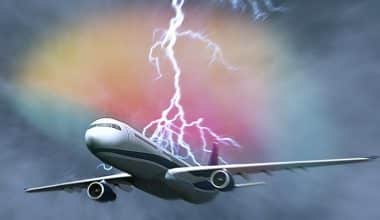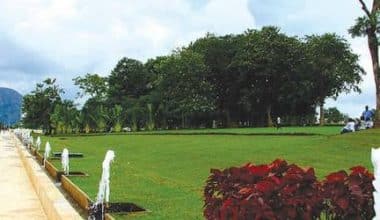Travel writers have written for glossy magazines and the drab pages of memoirs throughout the years. They made their words tangible in print, shared them with readers who handled real paper, and read a piece for more than seven seconds.
Everything changed, however, with the development of the Internet. What is the modern definition of travel writing?
What is Travel Writing?
Travel writing, by definition, is writing that describes locations seen and experiences had while traveling.
Traditional travel writing follows a narrative of one person’s travels, however, modern travel writing has begun to merge into a blog-style structure, with a concentration on advice, recommendations, and must-sees.
Travel journals today publish just as many service-oriented pieces and listicle roundups as they do longer-form first-person descriptions of an author’s journey. This isn’t necessarily a bad thing; the digitalization of travel writing makes it easier than ever to break into the industry. Travel blogs elevate travelers to the status of travel writers simply by describing their adventures on a personal website.
Modern travel writing includes more voices than ever before, and it is gradually becoming more inclusive, which is crucial. Because much of the writing was done through a prism of colonialism and exoticism, the “good old days” of travel writing are loaded with power inequities. Traditionally, white, male Western writers would communicate their skewed perceptions of people and places with their domestic audiences.
Diversifying travel writing in both medium and voice, as well as widening the notion of travel writing, should help to break the heritage of imperialist travel writing.
People are writing about their own countries and cultures instead of “parachute journalism,” in which travel writers share stories about a place they visited once.
What is the Point of Travel Writing?
We learn about new places, people, and ideas through travel writing. True excellent travel writing may transport us, bring inspiration or escape, and take us to far-flung destinations. I like to think that travel writing, like travel itself, may broaden our perspectives on diverse cultures and ways of life, developing more empathy for others and curiosity about the world around us.
Travel writing can make us fantasize about packing our possessions, grabbing our passports, and spending a week, a month, or a year somewhere else than home. Or it can simply take us through words to places we would never see otherwise.
In addition, travel writing has a vital practical component. Legendary travel guidebooks have long provided brief and actionable travel advice – in addition to elegant and beautiful descriptions of destinations, I’ve used Lonely Planet’s volumes to identify little cafes, places to stay, and train stations. I didn’t have a phone when I first started traveling and relied on internet cafés to stay connected. My well-worn guidebooks provided me with all the information I required as I stumbled through South America.
Read Also: How to Become a Travel Agent for Disney (Detailed Guide)
Much travel writing has evolved as a result of online media. Most travel websites now provide this form of travel writing: where to locate the best locations to dine, stay, and wonder.
People are traveling more and consuming more media than ever before. With the sheer volume of travel-related social media posts, blogs, YouTube videos, and television programs, the average consumer no longer has to be informed by what a place on the other side of the planet is like by a travel writer.
When you can watch TikToks from any place, there’s not much mystery left in the world.
We’re also conditioned to consume visual-heavy, fast-paced information. Few people sit down to read several thousand words on a New Zealand national park when they can simply search for the correct hashtag and be swamped with visuals.
People nowadays are more inclined to seek out a ‘top 10 things to do’ list – a quick and dirty highlight reel they can repeat – than a moving and thought-provoking piece of literature.
Add to that the reality that most of the travel information you see online now is aimed at marketing a product or building the profile of a brand rather than selling a publication.
That is not to say that online travel content is terrible. Lonely Planet, on the other hand, has wonderful free online tools for travelers – their website also happens to be an excellent example of content marketing, retaining their image as an authority on travel while gently directing visitors toward purchasing their guidebooks.
What is Literary Travel Writing?
Since travel writing shares many characteristics with different genres such as personal narratives, histories, expedition chronicles, and epic quest stories, it is difficult to categorize travel writing.
It is derived from and complements each of these forms. Travel writing has always been about exploring one’s self as much as it has about the people or places visited.
Travel authors and critics frequently claim that the destination is unimportant. They argue that the true subject of a travel writer is the travel process, the effort or travel involved.
Travel writing in literature chronicles travelers’ encounters in exotic locations and settings. It contains detailed descriptions, historical context, images, and possibly maps and diagrams.
It ranks with romance, action adventure, mystery, and fantasy. Travel writing and essay writing are sometimes combined in travel writing collections or magazine pieces.
The styles range from journalistic to contemplative to humorous to overly serious. Early examples can be found in Greek mythology, medieval China, and early Arabic literature. Travel writing can be found on websites, books, blogs, and journals nowadays.
General Travel Writing Guidelines
Travel writing, like any other writing genre, has conventions – things that are expected and generally accepted as best practices. While there are numerous guidelines, travel writing should:
- Be in the first person.
- Include sensory details
- In the past tense, tell the story.
- Maintain a conversational tone.
- Provide readers with value by providing useful ideas for navigating a culture or location.
- Make yourself accessible to the audience.
Travel Blogs
Travel literature has now evolved into a social media genre in the shape of travel blogs.
These travel bloggers use channels such as Instagram, Facebook, Twitter, Pinterest, and personal blogs to share information about their trips as well as travel advice for specific places or traveling in general.
Online Writing Assistance
Many people believe that travel writing is simple, but it is not. Writing an essay or research paper can be similarly difficult, especially if you don’t know where to begin.
You may not always have the time to study, write, and complete your assignments. If you are experiencing such difficulties, contact Custom Writings, a competent and dependable custom essay-writing business with over 15 years of experience.
The organization employs skilled writers who are well-versed in the academic discipline in which they specialize. Whether your task is small, long, or urgent, their writers will accomplish it to your demands. They can help you address any writing dilemma you may be experiencing.
Travel Writing Examples
Here are four distinct examples of travel writing, each of which is excellent for a different reason.
#1. Matt the Nomad (blog)
Run by a travel expert on a budget Nomadicmatt.com by Matt Kepnes is an enthusiastic and lively blog – his passion is clear from the start and pervades throughout his site. He’s authored a best-selling book called How to Travel the World on $50 a Day, and he’s continually adding fresh stuff to his website.
He’s created valuable profiles for numerous towns and locations throughout the world, but his most insightful articles are those that provide practical booking advice and money-saving ideas, such as “How to Find a Cheap Flight.” Because he has traveled so extensively, he has discovered several ways to avoid the high costs of travel and is committed to sharing them – which is fantastic news for the typical vacationer who wants to save a bob or two (which is most of us).
#2. Fodor’s (series of guidebooks and website)
Fodor’s has embraced the contemporary age, not only publishing the world’s most popular series of travel guidebooks, but also having a user-friendly website that is crammed with information and available on all devices – desktop, tablet, and mobile.
The website’s content is undoubtedly less thorough than the guidebooks that helped create the company’s reputation, but brevity is not always a bad thing. After all, the site’s primary job is to give quick information, which it provides. Look at the site’s main Florence page to see what I mean: it gives a brief overview of the city and then covers the top reasons to visit, with several connections to specific articles with evaluations and advice.
From a less literary standpoint, Fodor’s website is also mobile-friendly, making it extremely easy to navigate on the fly, unlike some of its competitors.
#3. Travels with Charley by John Steinbeck (nonfiction book)
As his novel-writing career was winding down and he was entering his forties, John Steinbeck (author of The Grapes of Wrath and Of Mice and Men) took a road trip across the United States with his dog Charley and subsequently produced a book about the experience.
Unlike the other examples in this post, Travels with Charley does not provide any useful information for travelers to America – it is more of a snapshot of the country in 1960.
Steinbeck set out from his Long Island, New York, home and traveled across the country in an anti-clockwise loop. The total distance traveled was estimated to be around 10,000 miles.
Steinbeck vividly captures American culture in Travels with Charley, as he does in the majority of his fictional writing. A copy can be purchased for pennies at a used bookstore or through various online retailers such as Amazon and eBay.
#4. Kate’s Adventures (blog)
Kate McCulley is a well-known solo female travel blogger. Her aptly named website, Adventurous Kate, more closely resembles a journal than anything else – the writing is quite conversational and written in the first person.
Kate makes good use of images in her blog entries; it’s not uncommon to see a dozen in a single article, and they’re all photos she took with her own camera. Importantly, Kate’s photographs are well-placed and complement her writing; a perfect example is her piece about her visit to a Cotswolds gin distillery.
Conclusion
Travel writing is the writing of places, people, and things in various locations. It also entails writing about how, when, and where to travel while keeping the reader in mind.
Travel writing is about sharing your experiences with others so that they might learn from them or, at the very least, avoid making the same mistakes you did. Besides, it’s writing about things in your backyard that everyone else finds strange.
The best travel writing is an exploratory journey into other locations to gain insights and understanding. It’s complex particular, like other forms of literature, speak to universal themes.
Related Articles
- Technical Writing: Meaning, Types, Characteristics, & Salary
- HOW TO WRITE A MOVIE SCRIPT: The Ultimate Guide 2023
- CREATIVITY: Meaning, Writing, Museum & What You Need to Know
- HOW TO IMPROVE WRITING SKILLS: Top Easy Steps & Books
- WHAT IS FREELANCE WRITING: What They Do, Job Sites Online & Beginners






